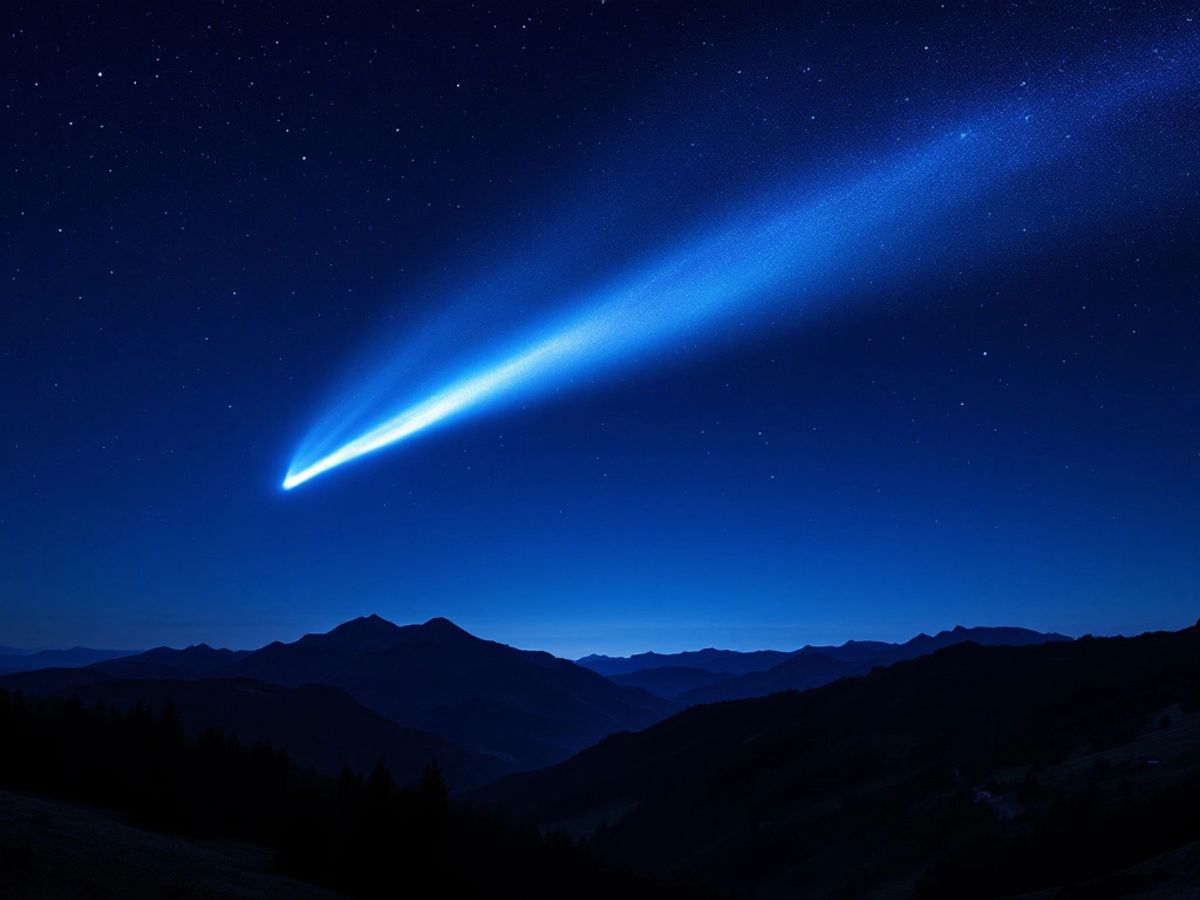A spectacular celestial event is set to unfold in Romania as the comet C/2023 A3 approaches Earth, offering a rare opportunity for skywatchers to witness its brilliance. This comet, which has not been seen in the vicinity of our planet for over 26,000 years, will be visible to the naked eye, even during the day, depending on weather conditions.
Key Takeaways
- Visibility: The comet will be visible in Romania around 7 PM, particularly in the western sky near Venus.
- Distance: On October 12, the comet will be at its closest point to Earth, approximately 70.7 million kilometers away.
- Duration: The comet will remain visible for several days, with optimal viewing times around sunset.
- Unique Features: The comet’s tail will become more pronounced as it approaches the Sun, creating a stunning visual spectacle.
What To Expect
The comet C/2023 A3 is expected to reach its peak visibility on October 12, 2024, when it will be just 0.472764 astronomical units from Earth. This distance translates to about 70,724,459 kilometers, making it a significant event for both amateur and professional astronomers alike.
Astronomer Adrian Sonka has indicated that the best time to observe the comet will be around 7 PM, looking towards the west. Those equipped with binoculars or telescopes will have an even more spectacular view, as the comet’s tail stretches out due to the heat from the Sun melting its icy core.
Viewing Conditions
- Optimal Time: October 12, 2024, around 7 PM.
- Location: Look towards the western sky, to the right of Venus.
- Weather Impact: Cloudy conditions may hinder visibility, so clear skies are ideal for observation.
The Comet’s Journey
Discovered on February 22, 2023, by the ATLAS telescope in South Africa, C/2023 A3 has been traveling through the solar system at an impressive speed of approximately 290,664 kilometers per hour. This rapid movement will allow observers to notice its position change against the backdrop of stars within just 15 minutes.
The comet is expected to exhibit a brightness magnitude ranging from -3 to -5, making it one of the brightest comets visible this year. As it moves away from the Sun, its brightness will gradually decrease, but it will still be visible for several days following its closest approach.
Historical Context
This event marks the first time C/2023 A3 has come close to Earth, and it is anticipated that it will not return for another 26,000 years. The last notable comet visible from northern latitudes was Hale-Bopp in 1997, making this a significant occasion for astronomy enthusiasts.
Conclusion
The appearance of comet C/2023 A3 offers a unique opportunity for skywatchers in Romania and beyond to witness a celestial phenomenon that will not be repeated for millennia. Whether you are an experienced astronomer or a casual observer, this event promises to be a memorable experience. Make sure to mark your calendars and prepare for an evening of stargazing!






